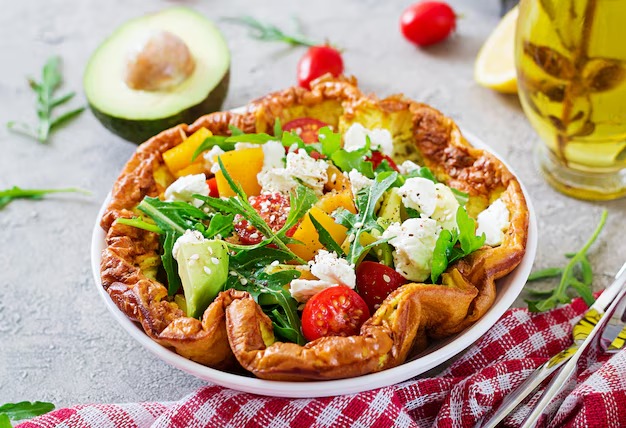Simple Ways to Enhance Your Food Experience
Food is more than just sustenance; it’s an experience that engages all the senses. Whether you’re cooking at home, dining out, or exploring new cuisines, there are countless ways to elevate your meals and make them more enjoyable. Here are some practical, actionable tips to transform your food experience from ordinary to extraordinary.
1. Experiment with Fresh Ingredients
One of the simplest ways to enhance your food experience is to prioritize fresh, high-quality ingredients. Fresh produce, herbs, and proteins can significantly improve the flavor and texture of your meals. For example, swapping out canned tomatoes for ripe, in-season ones in your pasta sauce can make a world of difference.
Visit local farmers’ markets or specialty stores to discover seasonal ingredients. If you’re growing your own herbs or vegetables, even better—using freshly picked basil or cilantro can elevate a dish instantly.
2. Master Basic Cooking Techniques
Understanding fundamental cooking methods can transform your approach to food. Techniques like sautéing, roasting, and braising can bring out the best in your ingredients. For instance, roasting vegetables caramelizes their natural sugars, creating a depth of flavor that boiling simply can’t achieve.
Take the time to learn how to properly season your dishes. A pinch of salt at the right moment can enhance flavors, while a dash of acid, like lemon juice or vinegar, can brighten up a dish.
3. Pay Attention to Presentation
They say we eat with our eyes first, and it’s true. Thoughtful presentation can make even the simplest meal feel special. Arrange your food on the plate with care, using contrasting colors and textures to create visual appeal. For example, a sprinkle of fresh herbs or a drizzle of olive oil can add both flavor and aesthetic value.
Invest in quality tableware and serving dishes. A beautifully set table can make dining feel like an event, even on an ordinary weeknight.
4. Explore Global Cuisines
Broadening your culinary horizons can introduce you to new flavors and techniques. Try cooking dishes from different cultures, or visit restaurants that specialize in cuisines you’re unfamiliar with. For instance, if you’ve never tried Ethiopian food, explore dishes like injera and doro wat to experience unique spices and textures.
Keep an open mind and be willing to step out of your comfort zone. You might discover a new favorite dish or ingredient.
5. Pair Food with the Right Beverages
Pairing food with complementary beverages can enhance the overall dining experience. A crisp white wine might pair perfectly with seafood, while a robust red can elevate a hearty steak. Non-alcoholic options, like herbal teas or infused water, can also complement your meal.
Experiment with pairings to find what works best for your palate. Even a simple glass of sparkling water with a squeeze of citrus can refresh your palate between bites.
6. Practice Mindful Eating
Slowing down and savoring each bite can make your meals more enjoyable. Mindful eating involves paying attention to the flavors, textures, and aromas of your food. This practice not only enhances the experience but can also help you better appreciate the effort that goes into preparing a meal.
Try turning off distractions like the TV or phone and focusing solely on your food. You might be surprised by how much more you enjoy your meal.
7. Cook with Others
Cooking with friends or family can make the process more fun and rewarding. Collaborating in the kitchen allows you to share techniques, swap ideas, and create memories. For example, hosting a pizza night where everyone adds their favorite toppings can be a delightful way to bond over food.
Even if you’re cooking solo, consider inviting loved ones to join you for the meal. Sharing food is a universal way to connect and enhance the experience.
8. Keep a Food Journal
Documenting your culinary adventures can help you track what you enjoy and what you’d like to improve. A food journal can include recipes, flavor combinations, or even restaurant recommendations. Over time, it becomes a personalized guide to your food journey.
Reflect on what worked well and what didn’t. This practice can help you refine your tastes and cooking skills.
9. Incorporate Texture Contrast
Texture plays a crucial role in the enjoyment of food. Combining different textures—like creamy, crunchy, and chewy—can make a dish more interesting. For example, adding toasted nuts to a salad or a crispy crust to a creamy soup can elevate the overall experience.
Think about how you can introduce variety into your meals. Even a simple garnish, like croutons or seeds, can add a satisfying crunch.
10. Celebrate the Process
Finally, remember that cooking and eating are meant to be enjoyed. Embrace the process, whether you’re trying a new recipe or perfecting an old favorite. Don’t be afraid to make mistakes—they’re often the best way to learn.
Take pride in your creations, no matter how simple they may be. The joy of cooking and eating lies in the journey, not just the destination.
By incorporating these simple strategies, you can transform your food experience into something truly memorable. Whether you’re a seasoned chef or a beginner in the kitchen, there’s always room to explore, experiment, and enjoy the world of food.



